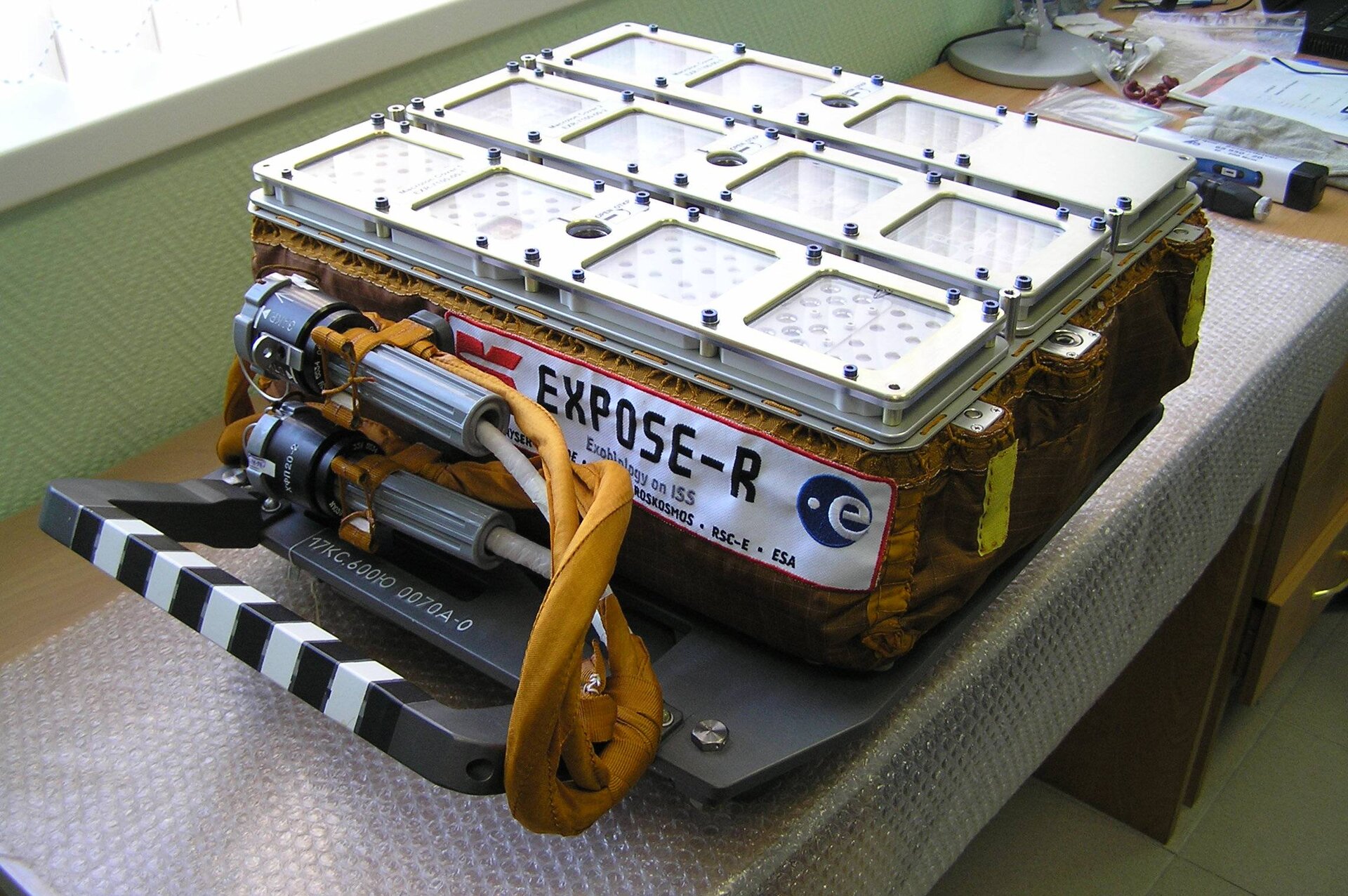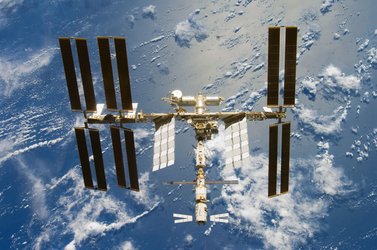Exposure experiments installed outside International Space Station
A suite of ESA experiments, some of which could help understand how life originated on Earth, was installed on the outside of the Russian segment of the International Space Station during a spacewalk yesterday.
The nine experiments are part of the Expose-R payload that was attached outside the Russian Zvezda module during the 4-hour and 49-minute spacewalk performed by International Space Station (ISS) crewmembers Mike Fincke and Yury Lonchakov.
Expose-R is equipped with three trays. Each tray is loaded with a variety of biological samples including plant seeds and spores of bacteria, fungi and ferns that will be exposed to the harsh space environment for about one and a half years.
Away from Earth's protective atmosphere, the organisms will be exposed to solar ultraviolet (UV) radiation, vacuum, cosmic rays and extreme temperature variations as the ISS repeatedly passes between areas of direct sunlight and the cold darkness of Earth's shadow.

At the end of the exposure period, the Expose-R trays will be retrieved from their location outside the Station and returned to Earth on a Russian Soyuz spacecraft. From the landing site in Kazakhstan, the trays will be returned via Moscow to the Microgravity User Support Centre (MUSC) in Cologne, Germany. From there the samples will be distributed to scientists for further analysis in the laboratory.
Expose-R accompanies Expose-E, a similar, complementary set of trays filled with terrestrial organisms that was installed on the outside of the European Columbus laboratory in February 2008 as one of the nine scientific payloads of EuTEF, the European Technology Exposure Facility.
The Expose-R and -E experiments are part of ESA’s astrobiology research activities - studying the origin, evolution and distribution of life in the Universe. Some Expose experiments investigate to what extent particular terrestrial organisms are able cope with extra-terrestrial environmental conditions. Others test how organic molecules react when subjected for a prolonged period of time to unfiltered solar light.
Expose-E and Expose-R are part of the European Programme for Life and Physical Sciences (ELIPS) within ESA's Directorate of Human Spaceflight.
After installing Expose-R, the spacewalkers also removed some unnecessary straps near a docking target and photographed the ISS exterior. This was the 120th spacewalk in support of ISS assembly and maintenance.








